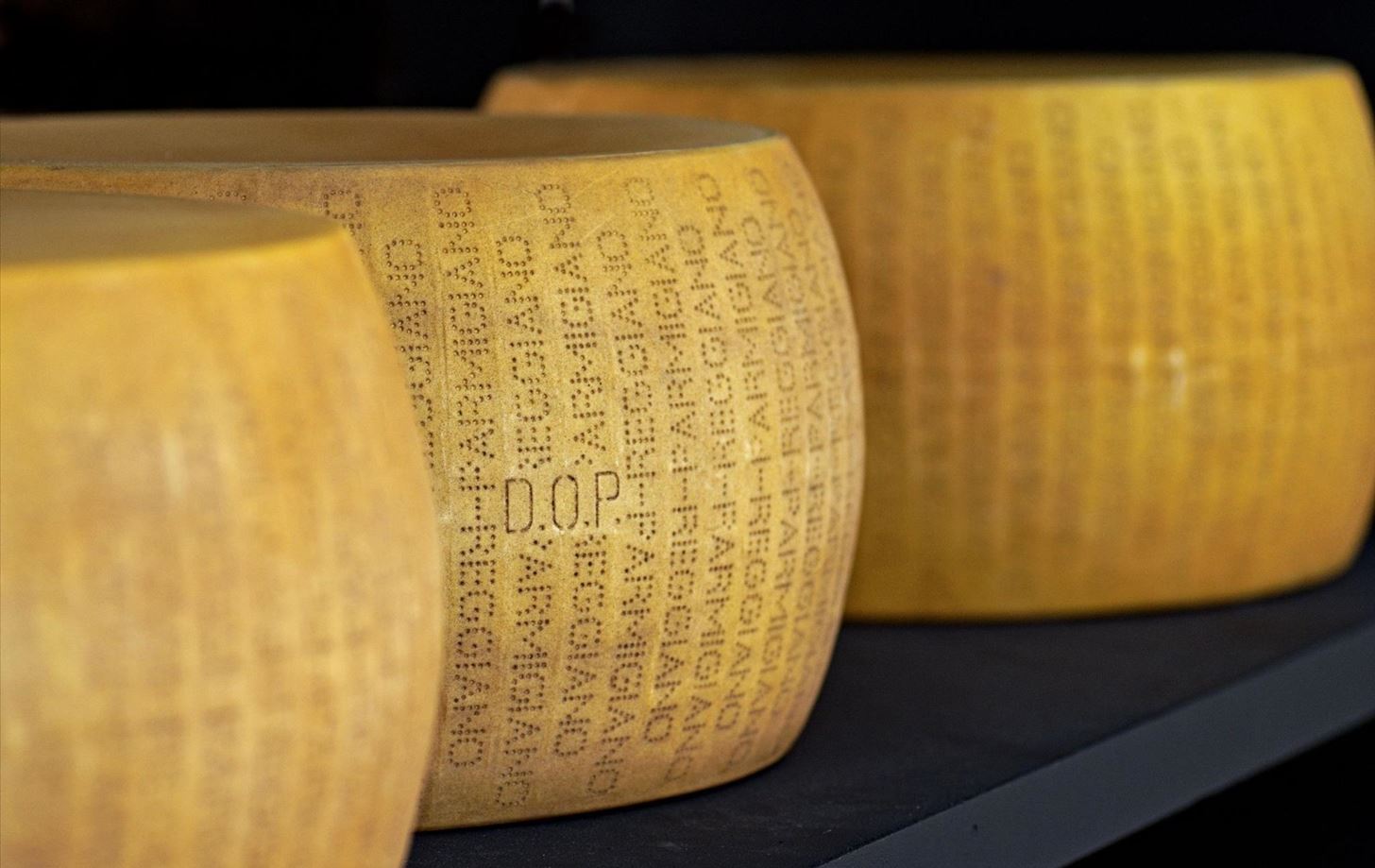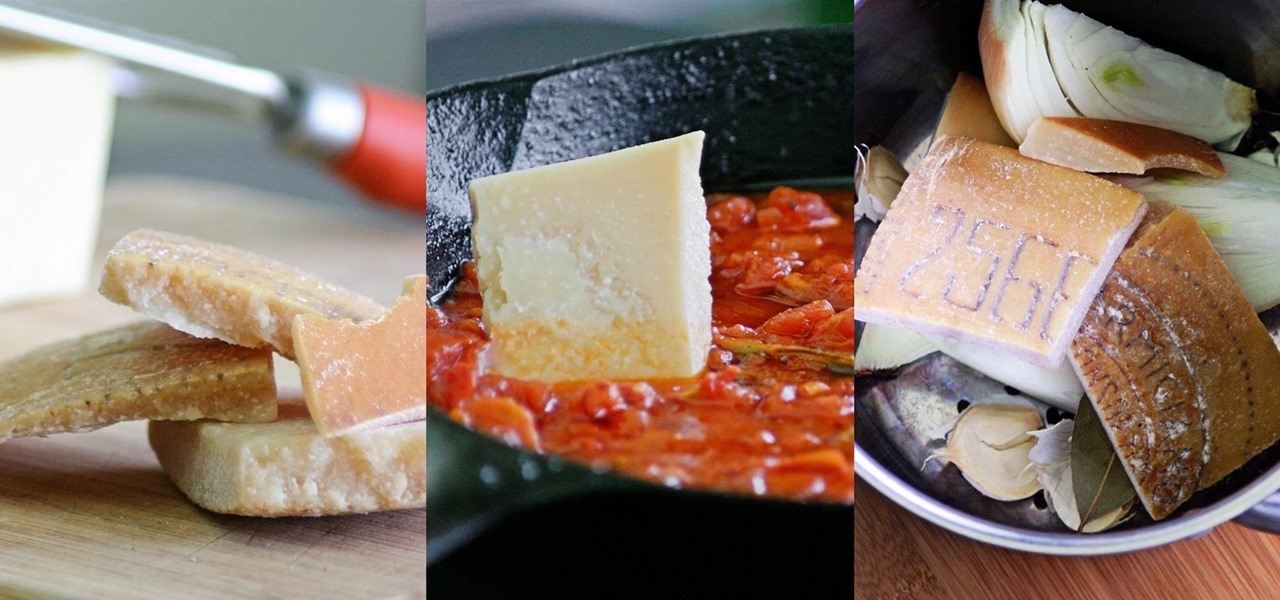There are certain ingredients that chefs regularly use to elevate their food beyond the status of what us mere mortals can create. Shallots are one. Good, real Parmesan cheese is another. And the rind of that real Parmesan cheese just so happens to be one of the culinary world's biggest kept secrets.

Parmesan rinds are one of my favorite ingredients. They're cheap, (more on that below), packed with flavor, and can easily impart a new element into many dishes. I like to call them the bay leaves of the dairy world: add them at the start of the dish, take them out before you eat the dish, and enjoy a whole new world of flavor.
What Exactly Are They?
Parmesan rinds are exactly what they sound like: the rind from a round of authentic Parmesan cheese. When the cheese is finished, it has a protective rind that develops all along the outside, like crust on bread.

The rind has all the flavor of the cheese, but it's mostly inedible (it's actually fine to eat, but the texture is hard to work with). It's best to cook with it, so as to extract all that rich flavor.
You Can Flavor Sauces & Soups
Adding a Parmesan rind to any sauce or soup will instantly kick up the flavor. The rind won't melt (though it will get soft); it will just sit in your sauce or soup and infuse it with extra umami and savor. Given that Parmesan is one of the key ingredients in Italian cuisine, it goes without saying that the rinds work especially well in Italian food. I add a rind to every batch of pasta sauce that I make, red or white.

Even though this amazing, classic pasta sauce only asks for three ingredients, a Parm rind or two would probably amp things up considerably.
You Can Make Parmesan Broth
My favorite broth in the world is Parmesan. It also happens to be the most diverse broth that I know of.

Use it as the base for risotto or braised meat, and you'll instantly impart velvety creaminess into the dish. Or simply add a few more basic ingredients, and you've got a luxurious soup.
Making Parmesan broth is a cinch: just add a few rinds and some aromatics to a pot of water, and simmer for an hour or two.

After the broth has reduced a bit, strain it, and enjoy (I drink a glass of it when I make it; I have no shame about this).

Add to Olive Oil, Steam with Veggies, or Grill It
These two simple techniques—adding to sauces and soups, and making broth—are my go-to options for Parmesan rinds, but there's no limit to what you can do. You can make Parm-infused olive oil, or, as a reader at The Kitchn suggests, you can steam artichokes with the rinds. And if your rinds don't have a wax coating, you can even grill them on the barbecue until they're tender and gooey enough to eat.
Pro Tip: Parm Rinds Store & Freeze Well
One of the great things about Parmesan rinds is that you can collect them and keep them as long as you want. They'll hold in the fridge for months, and you can keep them in your freezer for years. And while you can slowly save the rinds from every piece of Parmesan you purchase, you can also buy containers of rinds from cheese shops and high-end grocers, where they're extremely cheap.
Want More Cheesy Goodness?
Of course you do.
Just updated your iPhone? You'll find new emoji, enhanced security, podcast transcripts, Apple Cash virtual numbers, and other useful features. There are even new additions hidden within Safari. Find out what's new and changed on your iPhone with the iOS 17.4 update.























Be the First to Comment
Share Your Thoughts